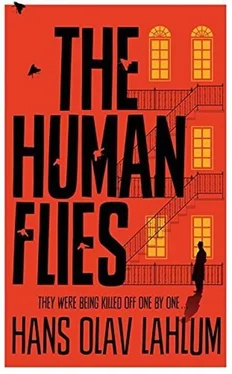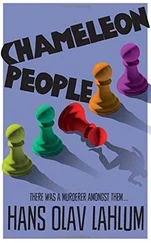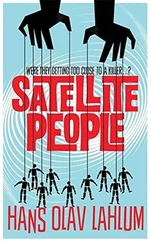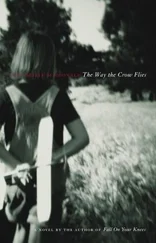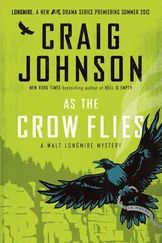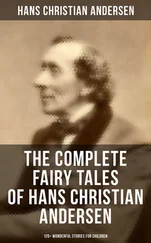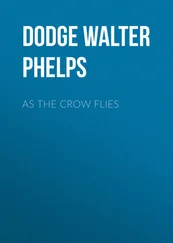DAY ELEVEN: Tidying Up and Conclusions
As the more observant, older reader will perhaps recall, there was never a big court case following the murders in 25 Krebs’ Street. I was woken early on 14 April 1968 by the telephone – despite the fact that it was a Sunday, and Easter Sunday at that. It was barely eight o’clock. The call was from Oslo Remand Prison, where Andreas Gullestad had just been found dead in his cell.
I drove straight to the prison, where the governor informed me with deep regret of what had happened. The prisoner had been extremely cooperative on arrival and not given reason for any special measures to be put in place. He had asked for some paper and a pen in order to write a more detailed confession, which he hoped might help the investigation. He had obviously sat up late writing, as three tightly spaced pages and a two-page map had been left on the table. But he himself was lying dead on his bed with a smile on his lips when his breakfast was brought in to him in the morning.
On the table lay a letter that said the following:
Oslo, 13 April 1968
To Detective Inspector Kolbjerrn Kristiansen – and anyone else he may wish to share this with,
In order to save the legal system unnecessary costs, I hereby confirm that it was the undersigned who shot and killed Harald Olesen in 25 Krebs’ Street on Thursday, 4 April this year. My motive was revenge and a strong desire to prevent him from revealing details of a criminal incident in 1944 that is detailed below. In order to disguise the murder of Olesen, I then killed Konrad Jensen at the same address on Tuesday, 9 April this year.
I also confess to the killing of the refugee Anna Maria Rozenthal by the Swedish border near Trysil on 21 February 1944. I am, however, not responsible for the murder of her husband, Felix Rozenthal, who had been shot and killed by Harald Olesen in my presence only a few seconds earlier. For further details of these four murders, I refer to the oral statement I gave to you in the presence of witnesses earlier today.
I would like to congratulate you on your perfectly executed investigation into the murders of Harald Olesen and Konrad Jensen. In the course of the past ten days, you have not only solved these two murders, but also two further murders that you had never heard of until the investigation was opened. It was my great misfortunate that you were appointed to lead this investigation. It was an unpleasant surprise to see how quickly you were on my trail, as a result of some very astute conclusions in the days immediately after the death of Harald Olesen. However, your manoeuvre following the death of Konrad Jensen was even more elegant, when you officially stopped the investigation, but in reality stepped it up. I recognized how dangerous you were when you asked me once again about my deceased father’s connection with Harald Olesen before the war, the following day. But it was really only on Friday, when I received the order to remain available for questioning over the weekend, that I realized that the danger was not over and that the investigation was in fact on my tail again and making progress. And finally, you fooled me again during my arrest today by placing a lady sharpshooter disguised as a handicapped secretary in a position where I could not see both of you at once.
In hindsight, I would also like to thank you for saving me from myself – to the extent that your arrest prevented me from adding any more deaths to my already heavy burden. I would like to apologize sincerely to you and to the young Miss Sara Sundqvist for the deeply upsetting events that I hope you will understand were only set in motion through sheer desperation. I also, to the extent that this now is of any interest, declare myself guilty of the attempted murder of a policeman.
I must also apologize deeply to Miss Sundqvist for my role in the death of her mother. I still see this as my greatest crime. I hope that my subsequent effort to save Sara Sundqvist’s life in some way makes up for it. As I now understand that she has a strong wish to see her parents’ grave, I leave with this letter a hand-drawn map that may possibly help her to find the cave in question.
I know only too well that the loss of a parent can never be compensated fully with money, but hope it will be of some comfort that I hereby leave Sara Sundqvist half of my estate. The other half is left to my sister, again with profound apologies for the distress that the revelation of my crimes will cause her and her family. Following the example of Harald Olesen, I leave my flat in 25 Krebs’ Street to the ever-helpful Mrs Randi Hansen.
It is my hope that this will help you to understand my imminent death, which will now prevent me from attending a court case. I admit that my suicide is primarily driven by egoism. The prospect of a long court case in which the details of the murders that I have committed are unfolded is for me more painful than the long sentence I would no doubt have to serve. However, I hope and believe that my death prior to any such court case will be a relief not only for me and my family, but also for Sara Sundqvist and the surviving residents, as well as the friends and family of Harald Olesen and Konrad Jensen.
As I have previously told you, I lost my faith on that day in January 1941 when I received the message that my father had been shot by the Germans. I have never been able to rekindle my belief in a good and almighty God. I therefore die happy in the belief, given the circumstances, that there is no heaven or hell on the other side, just a vast emptiness, in which I can finally find peace from the memories and overwhelming feelings of guilt that have hounded me every day and as good as every night of my adult life.
And finally, in order to solve the mystery of my own death, I have committed suicide by swallowing a capsule of poison that I took with me into the cell. You will no doubt know that many members of the Resistance had suicide pills hidden on their bodies throughout the war. On my trips across the border with refugees during the war, I carried my suicide pill in a silver necklace, disguised as part of the chain. I started to wear this necklace again following your instructions on Friday. It is my hope that I am the last person in Norway to carry one of these suicide pills from the war, and that on finishing this letter, I will be the last to swallow one.
With my deepest respect, Andreas Gullestad (christened Ivar Storskog and better known by the code name Deerfoot during the war)
The prison governor’s relief was tangible when I voiced my understanding for the fact that the necklace had not been taken from the prisoner. I had to admit that I myself would not have imagined that it was hiding a deadly secret.
As the news of the investigation’s successful conclusion spread, telegrams and flowers flowed into the office. The murderer’s suicide in prison did not detract from the fact that the case, in terms of the investigation, had been perfectly handled – and certainly did not seem to put a dampener on the praise. I also realized very quickly that various potentially uncomfortable questions relating to details were no longer relevant.
I got a slight shock when I was shown into Patricia’s living room at five to twelve on Sunday. This was the first time that Patricia and I were not left alone after the maid’s hasty retreat. Sara Sundqvist sent me a friendly smile from her seat next to Patricia.
Patricia winked merrily at me and held out her hand towards her guest.
‘I took the liberty of inviting another guest to my home today. I understood that the young Miss Sundqvist would naturally also be interested in hearing an explanation of certain points.’
Читать дальше
